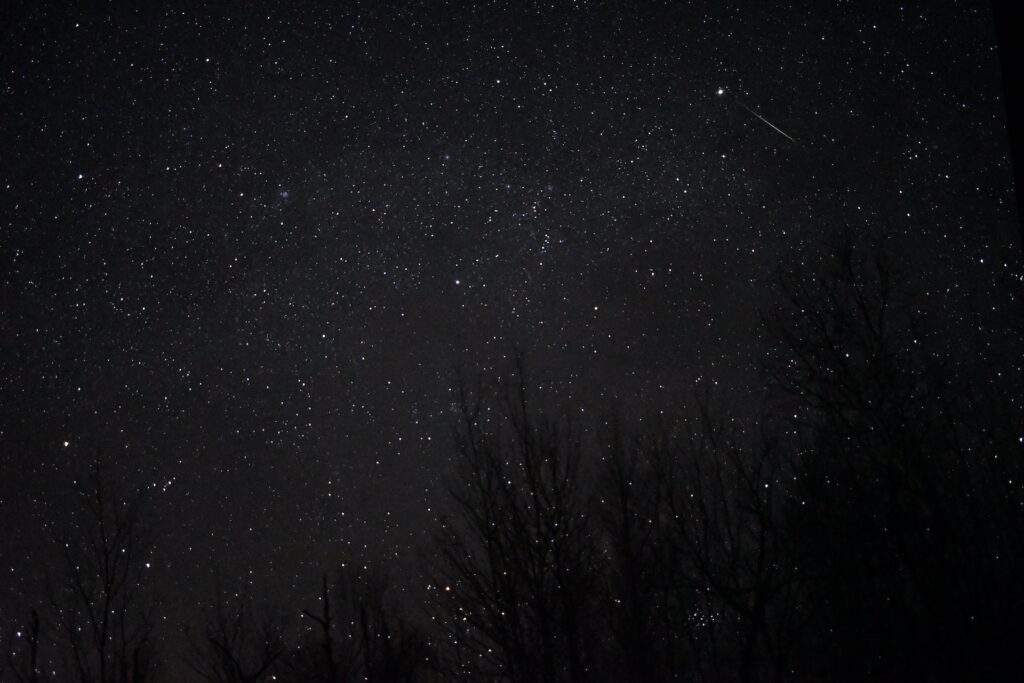
The Boundary Waters has joined just 12 other places in the world to receive a prestigious designation as a “Dark Sky Sanctuary.” The recognition means it it is one of the most remote (and darkest) places in the world — and that the future preservation of that unpolluted night sky is uncertain.
The Dark Sky designation is historic, according to the Superior National Forest, which applied for the certification as part of an international effort in the region. The Boundary Waters Canoe Area Wilderness is the first site in Minnesota to receive a Dark Sky certification, the first federally-designated wilderness site to be designated, and, at nearly 1.1 million acres, it will be the largest Dark Sky Sanctuary on Earth.
While there are more than 130 designated Dark Sky Places around the world, there are four international categories. “Sanctuary” has the fewest designated sites overall, with the other three U.S. sites in Arizona, Maine, and Nevada.
“We are excited to receive the Dark Skies Sanctuary designation for the BWCAW and are committed to preserving dark sky opportunities for future generations,” said Superior National Forest Supervisor Connie Cummins.
The certification is issued by the International Dark Sky Association, which works to reduce light pollution around the world. The designation program was launched in 2001 and has designated sites on every continent except Antarctica. The nearest sites to the BWCAW are in eastern Wisconsin and the Upper Peninsula of Michigan.
The International Dark Sky Association requires an extensive application, and performs a rigorous review before bestowing its seal of approval. Applicants must show there is broad support in neighboring communities for protecting dark skies, and document how the site meets a long list of criteria.

The BWCAW’s federally-designated wilderness status and almost pitch black skies made it a good candidate. There is no artificial lighting inside the wilderness, and many parts are far from external sources. The laws that created it provided extensive protection.
“Conservation and preservation laws, policy and guidance all lead to the protection of the night skies for scientific, natural, educational, cultural, and public enjoyment values, which are all part of protecting wilderness character,” said BWCAW Program Manager Ann Schwaller.
The BWCAW was nominated for certification by the Starry Skies Lake Superior chapter of the International Dark Sky Association, based in Duluth.
The designation effort was also part of a international coalition in the region coordinated by the Heart of the Continent Partnership. Partners including Voyageurs National Park and Quetico Provincial Park are also considering or working on applications for Dark Sky certification.
“We know this is not only a unique and beautiful wilderness, but also a place that holds special meaning for the many people lucky to have traversed it,” wrote Starry Skies Lake Superior president Cindy Hakala in the nominating letter. “We believe that once the BWCAW receives status as a Sanctuary, it will galvanize attention to the importance of the night sky in our region.”
Part of the application process involved trekking into the wilderness to measure night sky darkness at several locations. The Forest Service will continue to make annual monitoring trips to watch for any changes in light levels.
BWCAW Program Manager Schwaller, as well as wilderness rangers, used a special device on loan from the National Park Service, reports MPR News. When pointed at the zenith of the night sky, it detects the faintest light sources and provide a standard numeric measurement.
The darkness of the sky is measured on what is called the Bortle Scale, which ranges from illuminated inner-cities to pristine areas far from artificial light. Most of the BWCAW falls into the Bortle Scale’s highest category. The average score for all the measurements across the wilderness was 21.64, with a maximum possible of 22.
“Significant light domes are not present toward the local horizon in any direction,” the application reads.

(Produced by World Light Pollution Map published at www.lightpollutionmap.info, courtesy Superior National Forest)
Currently, the small cities on the edge of the BWCAW produce significant light pollution, but it does not reach far toward the wilderness area. Property-owners and municipalities are encouraged to reduce the light that escapes into the night sky in several ways.
The possibility of additional development in the area, including mines like the proposed Twin Metals copper-nickel mine southeast of Ely, also pose a risk of long-term light pollution. The application identifies the issue as one that would need to be addressed.
“Threats to the quality of the night sky could come from private industrial endeavors, such as large scale mining operations, near the Wilderness or smaller developments inside Wilderness on private inholdings,” the application says.
Dark Sky designation will not prohibit such developments, but ensure possible light pollution is evaluated during environmental review, and require mitigation to reduce it. Mitigation could include lighting fixtures and bulbs, reducing wattage, using shielding, illuminated signs, and modifying hours of operation.
With the Sanctuary designation, the dark night skies will be considered another essential aspect of the Boundary Waters’ wilderness quality.
The region’s dark skies will also continue to attract many visitors who seek views of the stars, and if they’re lucky, the aurora borealis. The IDA reports that 99 percent of Americans can’t experience a “natural night,” with few opportunities to see the stars and other wonders of the night sky that have been part of human existence for millennia.
Celebrate the night sky in northeastern Minnesota
Dark Sky Festival, organized by Starry Skies Lake Superior – September 17 to October 15
More information
- International Dark Sky Sanctuaries – IDSA
- Boundary Waters Canoe Area Wilderness – IDSA
- Boundary Waters designated a dark sky sanctuary – MPR News
- Starry Skies Lake Superior
- Preserving the starry skies in the Heart of the Continent

